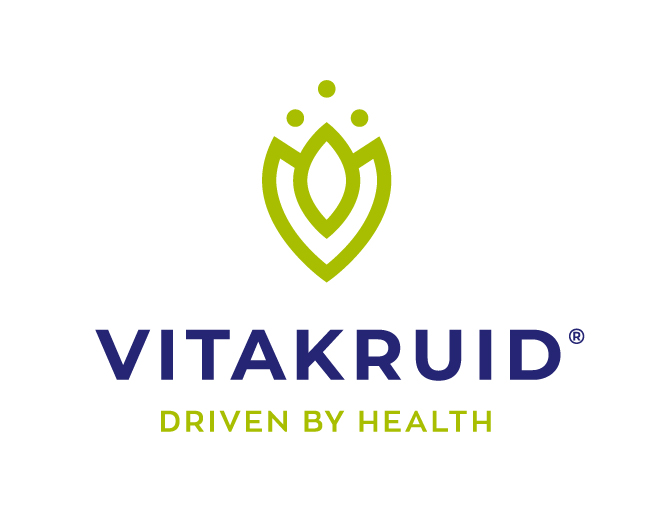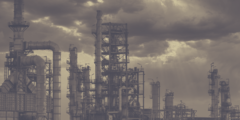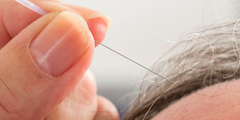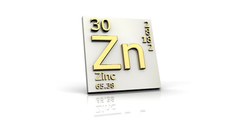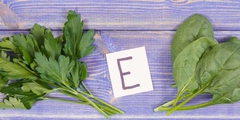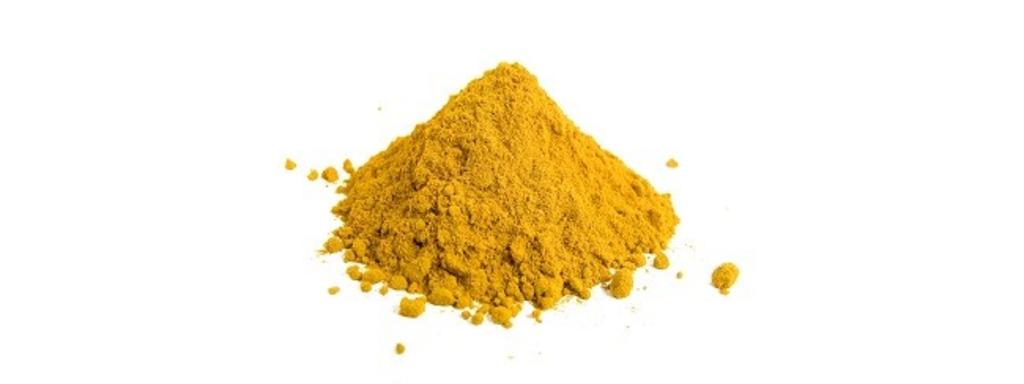
Sinds mensheugenis wordt de curcuma longa geteeld in India, Zuid-China en andere tropische en subtropische landen. Men neemt aan dat de curcuma oorspronkelijk uit India komt. De gemalen wortel van het nauw aan gember verwante curcuma longa wordt onder de naam curcuma, koenjit of Indiase geelwortel als specerij gebruikt. De curcuma kan ongeveer 1 m hoog worden. De goldenseal groeit het best in vochtige, warme gebieden. De knollen en wortelstok worden gescheiden van de laterale wortels. Vervolgens worden ze ondergedompeld in kokend water en daarna in de zon gelegd om te drogen. Door het drogen in de zon krijgen de ondergrondse delen een gele kleur. De gele kleur wordt door het zogenaamde curcumine (in feite zijn er zeker drie verschillende curcumines) te weeg gebracht. Curcumine staat ook bekend als de kleurstof E100. Na droging maalt men de wortelstokken tot een poeder dat de naam "curcuma" of "kurkuma" heeft.
Rassen
Er zijn verschillende variëteiten van curcuma. Afgezien van curcuma longa - de echte curcuma - er is een curcuma xanthorrhiza (Javaanse kurkuma, Javaanse curcuma, curcuma bitter) en curcuma zedoaria (ceder root). De curcuma zedoaria komt uit de Himalaya, waar we de bladeren van de plant gebruiken als een salade.
Deze monografie beschrijft de effecten als levercelbescherming, antioxidant, anti-inflammatoir en zijn antibacteriële en anti-schimmel (schimmel-dodende) eigenschappen.
Beste bezoeker
Gelieve u aan te melden om dit artikel te lezen. Registreer u hier, snel en gratis!
Product op maat
Trefwoorden
Referenties
1)Wikipedia.
2)Valstar E, Voedingsinterventie bij kanker, 3e druk , 2007 ; ISBN 978 90 4940 009 5.
3)Ye MX et al.; Phytomedicine 2012 , Apr 4 ; PMID 22483553.
4)Golombick t et al.; Am J Hematol 2012, Feb 15 ; PMID 22473809.
5)Streenivasan S et al.; Nutr Cancer 2012 Apr 10. PMID 22489823.
6)Yang FB ; Zhonghua Lao Dong Wei Sheng Zhi Ye Bing Za Zhi 2011 Nov;2911:846-8;PMID 22468302.
7)Mei X et al.; Chem Biol Interact 2012 Mar 20;1971:31-9;PMID 22465177.
8)Chandran B en Goel A ; Phytother Res 2012 Mar 9 ; PMID 22407780.
9)Zhang XY et al. ; Zhonghua Kou Qiang Yi Xue Za Zhi 2011 Nov,4611:678-83;PMID 22333308.
10)Cort A et al.; Mol Med Report 2012 Jun56:1481-6;PMID 22469952.
11)Yin H et al.; Acta Biochim Biophys Sin (Shanghai), 2012 Feb;442:147-53;PMID 22126905.
12)Liu AC et al.; Biol Pharm Bull. 2012;352:145-50;PMID 22293343.
13)Thong-Ngam D et al ; World J Gastroenterol. 2012 Apr 7;1813:1479-84;PMID 22509079.
14)Ghosh D et al ; Chem Biol Interact 2012 Feb 5:1953:206-14;PMID 22197969.
15)Araujo NC et al ; Photomed Laser Surg 2012 Feb;302:96-101;PMID 22224655.
16)Dong S et al ; PLoS One 2012:72: e31211; PMID 22359574.
17)Subramaniam D et al ; PLoS One 2012;72:e30590;PMID 22363450.
18)Han YK et al ; Krean J Pain 2012 Jan ;251:1-6;PMID 22259709.
19)Morsy MA et al ; J Physiol Biochem 2012 Mar;681:29-35;PMID 21986891.
20)Agnihotri N en Mishra PC ; J Phys Chem A. 2011 Dec 15:11549; PMID 22035040.
21)Sugawara J et al ; Am J Hypertens 2012 , Mar 15; PMID 22421908.
22)Kim SR et al ; Endocrinology 2012 Feb;1532:554-63; PMID 22186408.
23)Isacchi B et al ; Eur J Pharm Biopharm 2012 Apr;803:528-34;PMID 22142592.
24)Na HS et al FEMS Immunol Med Microbiol 2011 Dec;633:355-62;PMID 22092562.
25)Shao W et al ; PLoS One 2012;71;PMID 22253696.
26)Zhao X et al ; Neuropharmacology 2012 Feb;622:843-54;PMID 21945716.
27)Ko JC et al ; Toxicol Appl Pharmacol 2011 Sep 15;2553:327-38;PMID 21810436.
28)Minear S et al ; Eukaryot Cell. 2011 Nov;1011:1574-81;PMID 21908599.
29)Schaeffers MM et al ; PLoS One 2012;73;PMID 22431984.
30)Altenburg JD et al ; BMC Cancer 2011 Apr 21: 11:149;PMID 21510869.
31)Chen JW et al ; Hua Xi Kou Qiang Yi Xue Za Zhi 2011 Feb;291:83-6;PMID 21427908.
32)Tung YT et al ; Mol Nutr Food Res. 2011 Jul;557:1036-43;PMID 21538854.
33)Khajehdehi P et al; J Ren Nutr 2012 Jan;221:50-7;PMID 21742514.
34)Lin TY et al ; Prog Neuropsychopharmacol Biol Psychiatry 2011 Aug 15;357:1785-93; PMID 21741425.
35)Reuter S et al ; Genes Nutr 2011 May;62:93-108;PMID 21516481.
36)Liu HS et al ; Mol Pharmacol 2011 Oct;804:638-46;PMID 21757545.
37)Tu SP et al ; Cancer Prev Res (Phila) 2012 Feb;52:205-15;PMID 22030090.
38)Garcia-Gomes AS et al ; Med Mycol 2012 Jan;501:26-32;PMID 21539505.
39)Sookram C et al; Synapse 2011 Aug;658:788-94;PMID 21218454.
40)Chen LX et al ; Cancer Biol Ther 2011 Jan 15;112:229-35;PMID 21084858.
41)Guimaraes MR et al ; J Periodontal Res 2011 Apr;462:269-79;PMID 21306385.
42)Gao J et al ; Eur J Pharmacol 2011 Mar1;6541:92-9;PMID 21187084.
43)El-Azab M et al ; Eur J Pharmacol 2011 Feb 10;652(1-3):7-14;PMID 21114990.
44)Sun CY et al ; Zhongguo Zhong Xi Yi Jie He Za Zhi 2011 Mar;313:376-80;PMID 21485083.
45)Rono S et al ; Phytomedicine 2012 Apr 15; 1996):545-50;PMID 22445643.
46)Cuomo J et al ; J Nat Prod 2011 apr 25;744:664-9;PMID 21413691.
47)Yu WG et al ; Indian J Med Res 2011 nov;1345:717-24;PMID 22199113.
48)Yang MW et al ; Phytomedicine 2011 Jan 15;18(2-3):205-13;PMID20637579.
49)Pungcharoenkul K en Thongnopnua P, Phytother Res 2011 Nov;2511:1721-6;PMID 21796707.
50)Zhang C et al ; J Biol Chem 2010 Sep 10;28537:28472-80;PMID 20622013.
51)Kim M en Kim Y ; Nutr Res Pract 2010 Jun;43:191-5;PMID 20607063.
52)Liang YJ et al ; Chin J Cancer 2010 Jan;291:9-14;PMID 20038303.
53)Tang N et al ; Zhongguo Fei Ai Za Zhi 2010 Apr;134:301-6;PMID 20677554.
54)Bielak-Zmijewska A et al;CellProlif 2010 Aug;434:354-64;PMID 20590660.
55)Zhang J et al ; Oncol Rep. 2010 Nov;245:1217-23;PMID 20878113.
56)Zhong F et al ; Biol Pharm Bull 2011;342:226-32;PMID 21415532.
57)He ZY et al ;Cancer Invest 2011 Mar 2993):208-13;PMID 21314329.
58)Popovich DG et al ; J Am Coll Nutr 2010 jun;293:204-10;PMID 20833993.
59)Villegas I et al ; Mol Nutr Food Res 2011 Feb;552:259-67;PMID 20848615.
60)Chen QY et al ; Mol Cell Biochem. 2012 Jan;359(1-20:389-98;PMID 21874542.
61)Giladi N et al ; Expert Opin Investig Drugs 2010 Apr;19Suppl 1:S117-24;PMID 20374023.
62)Chen QY et al ; Oncol rep. 2010 May;235:1285-92;PMID 20372842.
63)Hsin IL et al; Mutat res 2010 jun;688(1-2):72-7;PMID 20363232.
64)Tuorkey M en Karolin K;Biomed Environ Sci 2009 Dec;226:488-95;PMID20337222
65)Liu M et al ; Biophys Chem. 2010 Mar;147(1-2):28-34;PMID 20071071.
66)Biswas J et al ; Hum Exp Toxicol 2010 Jun;2996):513-24;PMID 20056736.
67)Zhang QY et al ; Zhonghua Nan Ke Xue ; 2010 Jan;161:84-8;PMID 20180411.
68)Angelo LS et al ; Mol Cancer Ther 2011 Nov;1011:2094-103;PMID 21903608.
69)Valstar E, Voedingsinterventie bij kanker ; ISBN 978 904940 009 5.
70)Huang HC et al ; J Agric Food Chem 2011 jun22;5912:6765-75;PMID 21598989.
71)Veeraraghavan J et al ; Pancreas 2011 Oct;407:1107-19;PMID 21697760.
72)Lu YH et al ; Yao Xue Xue Bao 2010 Aug;458:1039-42;PMID 21351592.
73)Agarwal KA et al ; Surg Endosc. 2011 Dec;2512:3805-10;PMID 21671126.
74)Prakash P et al ; Thromb Res. 2011 Feb;1272:111-8;PMID 21144557.
75)Ide H et al; Prostate 2010 Jul 1;70910):1127-33;PMID 20503397.
76)Koosirirat C et al ; Int Immunopharmacol 2010 Jul;107:815-8;PMID 20438867.
77)Na LX et al ; Nutr Metab Cardiovasc Dis 2011 Jul;217:526-33;PMID 20227862.
78)Kheradpezhouh E et al ; Eur J Pharmacol. 2010 Feb 25;628(1-3):274-81;PMID 19919835.
79)Gowda NK et al; Br J Nutr 2009 Dec;10211:1629-34;PMID 19682401.
80)Jia SH et al ; Zhongguo Dang Dai Er Ke Za Zhi 2010 Feb;122:132-6;PMID 20199731.
81)Angelo LS et al; ; Mol Cancer Ther 2011 Nov;1911:2094-103;PMID 21903608.
82)Koeberie A et al ; Mol cancer Ther 2009 aug;88:2348-55;PMID 19671757.
83)Lim HW et al, Biochim Biophys Res Commun 2009 Nov;3891:187-92;PMID 19715674.
84)Kaur S et al ; Eur J Med Chem 2010 Sep;459:4209-14;PMID 20615583.
85)Kim T et al ; Biochem Biophys Res Commun 2009 Oct 16;3882-82;PMID 19665995.
86)Lee JH en Chung IK, Cancer Lett. 2010 Apr 1;2901:76-86;PMID 19751963.
87)Johnson SM et al, Anticancer Res. 2009 Aug;298:3185-90;PMID 19661333.
88)Khafif A et al ; Laryngoscope 2009 Oct;11910:2019-26;PMID 19655336.
89)Ortiz-Ortiz MA et al ; Neurotoxicology 2009 Nov;306:1008-18;PMID 19660496.
90)Chiu TL en Su CC ; Int j Mol Med 2009 Apr;234:469-75;PMID 19288022.
91)Jang HS et al ; Caheter Cardiovasc Interv 2009 Nov 15;746:881-8;PMID 19496118.
92)Pan Y et al ; Mol Cells 2008 Jun 30;254:531-7;PMID 18460899.
93)Ahmed T et al ; J Biochem Mol Toxicol 2010 Sep-Oct;245:286-92;PMID 20979154.
94)Jaisin Y et al ; Neurosci Lett 2011 Feb 11;4893:192-6;PMID 21167259.
95)Awad AS en El-Sharif AA ; Int Immunopharmacol. 2011 Aug;118:992-6;PMID 21354353.
96)Enyeart JA et al ; Biochem Biophys Res Commun 2008 Jun 13;3704:623-8;PMID 18406348.
97)Larmonier CB et al ; Am J Physiol Gastrointest Liver Physioll 2008 Nov;2955:G1079-91;PMID 18818316.
98)Mandal MN et al ; Free Radic Biol Med 2009 Mar 1;465:672-9;PMID 19121385.
99)Zhao CJ et al ; Zhongguo Zhong Yao Za Zhi 2008 Jun;3312:1434-8;PMID 18837350.
100)Zhao J et al ; Neurochem Res 2010 Mar;353:374-9;PMID 19774461.
101)Juan H et al ; Eur j Clin Pharmacol 2007 Jul;637:663-8;PMID 17468862.
102)Singer AJ et al ; Acad Emerg Med. 2007 dec;1412:1125-9;PMID 18045885.
103)Hanai H et al ; Clin Gastroenterol Hepatol 2006 Dec;412:1502-6;PMID 17101300.
104)Cruz-Correa M et al ; Clin Gastroenterol Hepatol 2006 Aug;48:1035-8;PMID 16757216.
105)Chainani-Wu N et al ; Phytomedicine 2007 Aug;14(7-8):437-46;PMID 17604143.
106)Kunnumakkara AB et al;Clin cancer Res 2008 Apr 1;147:2128-36;PMID18381954.
107)Usharani P et al;Drugs RD 2008;94:243-50;PMID 18588355.
108)Park J et al ; Mol Oncol 2008 Dec;24:317-26;PMID 19383353.
109)Shoskes D et al; Transplantation 2005 Dec 15;8011:1556-9;PMID 16371925.
110)Kalpana C en Menon VP ; J Med Food 2004 Winter;74:467-71;PMID 15671691.
111)Rasyid A en Lelo A ; Aliment Pharmacol Ther. 1999 ;132:245-9;PMID 10102956.
112)Sun J et al ; Crit Care Med 2008 Apr;364:1205-13;PMID 18379247.
113)Romiti N et al ; Life Sci. 1998;6225:2349-58;PMID 9651124.
114)Biswas SK et al ; Antioxid Redox Signal 2005 Jan-Feb;7(1-2):32-41;PMID 15650394.
115)Adhvaryu MR et al ; World J Gastroenterol 2008 Aug 14;1430:4753-62;PMID 18720535.
116)Feng B et al; Am J Physiol Endocrinol Metab 2008 Jun;2946:E1119-26;PMID 18413674.
117)Xu Y et al; Neuropharmacology 2009 Sep;574:463-71;PMID 19540859.
118)Manikandan R et al ; Eur J Pharmacol 2011 Nov 30;670(2-3):578-85;PMID 21925163.
119)Bishnoi M et al;Pharmacol Biochem Behav 2008 Feb;884:511-22;PMID 18022680.
120)Lee JH et al ; J Allergy Clin Immunol. 2008 May;1215:1225-31;PMID 18394691.
121)Maes M et al ; Neuro Endocrinol Lett 2007 Aug;284:456-62;PMID 17693979.
122)Sharma S et al; Neuroscience 2009 Jul 21;1614:1037-44;PMID 19393301.
123)Xie L et al; Int Immunopharmacol 2009 May;95:575-81;PMID 19539560.
124)Muthenna P et al ; FEBS Lett. 2009 Nov 19;58322:3637-42;PMID 19850041.
125)Shu L et al ; AAPS J. 2011 Dec;134:606-14;PMID 21938566.
126)Ramirez-Tortosa MC et al ; Free Radic Biol Med 2009 Oct 1;477:924-31;PMID 19539747.
127)Chen D et al ; Pharmacology 2008;824:264-9;PMID18849645.
128)Bhattacharyya S et al;J Biol Chem 2007 Jun 1;28222:15954-64;PMID 17392282.
129)Mito S et al ; Free Radic Res 2011 Oct;4510:1223-31;PMID 21781008.
130)Danilenko M en Studzinski GP ; Exp Cell Res 2004 Aug 15;298920:339-58.
131)Shen SQ et al ; World J Gastroenterol 2007 Apr 7;1313:1953-61;PMID 17461496.
132)Du ZY et al; Eur J Med Chem 2006 Feb;4192):213-8;PMID 16387392.
133)Sui Z et al ; Bioorg Med Chem 1993 dec;1960:415-22;PMID 8087563.
134)Lev-Ari S et al; Clin Cancer Res 2005 Sep 15;1118:6738-44;PMID 16166455.
135)Panahi Y et al ; Br J Nutr 2011 Nov 18;1-8;OMID 22099425.
136)Wessler S et al ; Biol Chem. 2005 May;3865:481-90;PMID 15927892.
137)Mahmmoud YA ; BBA 2011 Jan;18081:466-73:PMID 20888791.
138)Bava SV et al; J Biol Chem 2005 Feb 25;2808:6301-8;PMID 15590651.
139)Khajehdehi P et al ; Scand J Urol Nephrol 2011 Nov;455:365-70;PMID 21627399.
140)Singer AJ et al ; J Burn Care Res. 2011 Jan-Feb;321:135-42;PMID 21088615.
141) Shah BH, Nawaz Z, Pertani SA. Inhibitory effect of curcumin, a food spice from turmeric, on platelet-activating factor- and arachidonic acid-mediated platelet aggregation through inhibition of thromboxane formation and Ca2+ signaling. Biochem Pharmacol 1999;58:1167-72.
Andere referenties
WHO Monograph Rhizoma Curcumae Longae. In: WHO monographs on selected medicinal plants, vol 1 Genf 1999; 115-124.
Blumenthal M, Goldberg A, Brinckmann J. Herbal Medicine, Expanded Commission E monographs. American Botanical Council 2000;379-384. Integrative Medicine Communications, ISBN 0-9670772-1-4.
Aggarwal BB, Kumar A, Aggarwal MS, Shishodia S. Kurkumin derived from turmeric (Curcuma longa): a spice for all seasons. In: Preuss H, ed. Phytopharmaceuticals in Cancer Chemoprevention. Boca Raton: CRC Press; 2005:349-387. http://www.agrawal.org/PDF/Kurkumin-Season-Bw1.pdf
Chainani-Wu N. Safety and anti-inflammatory activity of Kurkumin: a component of tumeric (Curcuma longa). J Altern Complement Med. 2003;9(1):161-8.
Joe B, Vijaykumar M, Lokesh BR. Biological properties of Kurkumin-cellular and molecular mechanisms of action. Crit Rev Food Sci Nutr. 2004;44(2):97-111.
Araujo CC, Leon LL. Biological activities of Curcuma longa L. Mem Inst Oswaldo Cruz. 2001;96(5):723-8.
Maheshwari RK, Singh AK, Gaddipati J et al. Multiple biological activities of Kurkumin: a short review. Life Sci. 2006;78(18):2081-7.
Sharma RA, Gesher AJ, Steward WP. Kurkumin: the story so far. Eur J Cancer 2005;41(13):1955-1968.
Curcuma longa (turmeric). Monograph. Altern Med Rev. 2001;6S:S62-6.
Gul N, Mujahid TY, Jehan N et al. Studies on the antibacterial effect of different fractions of Curcuma longa against urinary tract infection isolates. Pakistan Journal of Biological Sciences 2004;7(12):2055-2060.
Ram A, Das M, Ghosh B. Kurkumin attenuates allergen-induced airway hyperresponsiveness in sensitized guinea pigs. Biol Pharm Bull. 2003;26(7):1021-4.
Yang F, Lim GP, Begum AN et al. Kurkumin inhibits formation of amyloid beta oligomers and fibrils, binds plaques, and reduces amyloid in vivo. J Biol Chem. 2005;280(7):5892-5901.
Dickinson DA, Iles KE, Zhang H et al. Kurkumin alters EpRE and AP-1 binding complexes and elevates glutamate-cysteine ligase gene expression. FASEB J. 2003;17(3):473-5.
Iqbal M, Sharma SD, Okazaki Y et al. Dietary supplementation of Kurkumin enhances antioxidant and phase II metabolizing enzymes in ddy male mice: possible role in protection against chemical carcinogenesis and toxicity. Pharmacol Toxicol. 2003;92:33-38.
Ghoneim AI, Abdel-Naim AB, Khalifa AE et al. Protective effects of Kurkumin against ischaemia/reperfusion insult in rat forebrain. Pharmacol Res. 2002;46(3):273-9.
Rajakrishnan V, Viswanathan P, Rajasekharan KN et al. Neuroprotective role of Kurkumin from curcuma longa on ethanol-induced brain damage. Phytother Res. 1999;13(7):571-4.
Ramirez-Bosca A, Soler A, Gutierrez MA et al. Antioxidant Curcuma extracts decrease the blood lipid peroxide levels of human subjects. Age 1995;18:167-169.
Hong J, Bose M, Ju J et al. Modulation of arachidonic acid metabolism by Kurkumin and related beta-diketone derivatives: effects on cytosolic phospholipase A(2), cyclooxygenases and 5-lipoxygenase. Carcinogenesis. 2004;25(9):1671-9.
Lao CD, Ruffin MT 4th, Normolle D et al. Dose escalation of a Kurkuminoid formulation. BMC Complement Altern Med. 2006;6:10.
Arun N, Nalini N. Efficacy of turmeric on blood sugar and polyol pathway in diabetic albino rats. Plant Foods Hum Nutr. 2002;57(1):41-52
Singh S, Aggarwal BB. Activation of transcription factor NF-kappa B is suppressed by Kurkumin (diferuloylmethane). J Biol Chem. 1995;270(42):24995-5000.
Firestein GS. NF-kappaB: Holy Grail for rheumatoid arthritis? Arthritis Rheum. 2004;50(8):2381-6.
Drent M, van den Berg R, Haenen GR et al. NF-kappaB activation in sarcoidosis. Sarcoidosis Vasc Diffuse Lung Dis. 2001;18(1):50-6.
Haefner B. NF-kappa B: arresting a major culprit in cancer. Drug Discov Today. 2002;7(12):653-63.
van den Berg R, Haenen GR, van den Berg H et al. Transcription factor NF-kappaB as a potential biomarker for oxidative stress. Br J Nutr. 2001;86(S1):S121-7.
Giardina C, Hubbard AK. Growing old with nuclear factor-kappaB. Cell Stress Chaperones. 2002;7(2):207-12.
Garg A, Aggarwal BB. Nuclear transcription factor-kappaB as a target for cancer drug development. Leukemia. 2002 Jun;16(6):1053-68.
Zhang M, Deng CS, Zheng JJ et al. Kurkumin regulated shift from Th1 to Th2 in trinitrobenzene sulphonic acid-induced chronic colitis. Acta Pharmacol Sin. 2006;27(8):1071-7.
Tourkina E, Gooz P, Oates JC et al. Kurkumin-induced apoptosis in scleroderma lung fibroblasts: role of protein kinase cepsilon. Am J Respir Cell Mol Biol. 2004;31(1):28-35.
Satoskar RR, Shah SJ, Shenoy SG. Evaluation of anti-inflammatory property of Kurkumin (diferuloyl methane) in patients with postoperative inflammation. Int J Clin Pharmacol Ther Toxicol. 1986;24(12):651-4.
Funk JL, Oyarzo JN, Frye JB et al. Turmeric extracts containing Kurkuminoids prevent experimental rheumatoid arthritis. J Nat Prod. 2006;69(3):351-5.
Sugimoto K, Hanai H, Tozawa K et al. Kurkumin prevents and ameliorates trinitrobenzene sulfonic acid-induced colitis in mice. Gastroenterology. 2002;123(6):1912-22.
Bundy R, Walker AF, Middleton RW et al. Turmeric extract may improve irritable bowel syndrome symptomology in otherwise healthy adults: a pilot study. J Altern Complement Med. 2004;10(6):1015-8.
Xu Y, Ku BS, Yao HY et al. The effects of Kurkumin on depressive-like behaviors in mice. Eur J Pharmacol. 2005;518(1):40-6.
Mazumber A, Raghavan K, Weinstein J et al. Inhibition of human immunodeficiency virus type-1 integrase by Kurkumin. Biochem Pharmacol 1995;49:1165-1170.
Rasmussen HB, Christensen SB, Kvist LP et al. A simple and efficient separation of the Kurkumins, the antiprotozoal constituents of Curcuma longa. Planta Med 2000;66:396-398.
Kiuchi F, Goto Y, Sugimoto N et al. Nematocidal activity of Turmeric: synergistic action of Kurkuminoids. Chem Pharm Bul 1993;41:1640-1643.
Perez-Arriaga L, Mendoza-Magana ML, Cortes-Zarate R et al. Cytotoxic effect of Kurkumin on Giardia lamblia trophozoites. Acta Trop. 2006;98(2):152-61.
Singh R, Chandra R, Bose M et al. Antibacterial activity of Curcuma longa rhizome extract on pathogenic bacteria. Current Science 2002;83(6):737-740.
Kim KJ, Yu HH, Cha JD et al. Antibacterial activity of Curcuma longa L. against methicillin-resistant Staphylococcus aureus. Phytother Res. 2005;19(7):599-604.
Mani H, Sidhu GS, Kumari R et al. Kurkumin differentially regulates TGF-beta1, its receptors and nitric oxide synthase during impaired wound healing. Biofactors. 2002;16(1-2):29-43.
Jagetia GC, Rajanikant GK. Kurkumin treatment enhances the repair and regeneration of wounds in mice exposed to hemibody gamma-irradiation. Plast Reconstr Surg. 2005;115(2):515-28.
Heng MC, Song MK, Harker J et al. Drug-induced suppression of phosphorylase kinase activity correlates with resolution of psoriasis as assessed by clinical, histological and immunohistochemical parameters. Br J Dermatol. 2000;143(5):937-49.
Prucksunand C, Indrasukhsri B, Leethochawalit M et al. Phase II clinical trial on effect of the long turmeric (Curcuma longa Linn) on healing of peptic ulcer. Southeast Asian J Trop Med Public Health. 2001;32(1):208-15.
Swarnakar S, Ganguly K, Kundu P et al. Kurkumin regulates expression and activity of matrix metalloproteinases 9 and 2 during prevention and healing of indomethacin-induced gastric ulcer. J Biol Chem. 2005;280(10):9409-15.
Kim DC, Kim SH, Choi BH et al. Curcuma longa extract protects against gastric ulcers by blocking H2 histamine receptors. Biol Pharm Bull. 2005;28(12):2220-4.
Mahady GB, Pendland SL, Yun G et al. Turmeric (Curcuma longa) and Kurkumin inhibit the growth of Helicobacter pylori, a group 1 carcinogen. Anticancer Res. 2002;22(6C):4179-81.
Rasyid A, Rahman AR, Jaalam K et al. Effect of different Kurkumin dosages on human gall bladder. Asia Pac J Clin Nutr. 2002;11(4):314-8.
Thapliyal R, Deshpande SS, Maru GB. Effects of turmeric on the activities of benzo(a)pyrene-induced cytochrome P-450 isozymes. J Environ Pathol Toxicol Oncol. 2001;20(1):59-63.
Quiles JL, Mesa MD, Ramirez-Tortosa CL et al. Curcuma longa extract supplementation reduces oxidative stress and attenuates aortic fatty streak development in rabbits. Arterioscler Thromb Vasc Biol. 2002;22(7):1225-31.
Ramirez-Tortosa MC, Mesa MD, Aguilera MC et al. Oral administration of a turmeric extract inhibits LDL oxidation and has hypocholesterolemic effects in rabbits with experimental atherosclerosis. Atherosclerosis. 1999;147(2):371-8.Ramirez-Bosca A, Soler A, Carrion MA et al. An hydroalcoholic extract of curcuma longa lowers the apo B/apo A ratio. Implications for atherogenesis prevention. Mech Ageing Dev. 2000;119(1-2):41-7.Zahid Ashraf M, Hussain ME, Fahim M. Antiatherosclerotic effects of dietary supplementations of garlic and turmeric: Restoration of endothelial function in rats. Life Sci. 2005;77(8):837-57.
Naito M, Wu X, Nomura H et al. The protective effects of tetrahydroKurkumin on oxidative stress in cholesterol-fed rabbits. J Atheroscler Thromb. 2002;9(5):243-50.
Miquel J, Bernd A, Sempere JM et al. The curcuma antioxidants: pharmacological effects and prospects for future clinical use. A review. Arch Gerontol Geriatr. 2002;34(1):37-46.
Deshpande U, Joseph L, Manjure S et al. Effects of turmeric extracts on lipid profile in human subjects. Med Sci Res 1997;25:695-698.
Ram A, Das M, Ghosh B. Kurkumin attenuates allergen-induced airway hyperresponsiveness in sensitized guinea pigs. Biol Pharm Bull. 2003;26(7):1021-1024.
Ringman JM, Frautschy SA, Cole GM et al. A potential role of the curry spice Kurkumin in Alzheimer's disease. Curr Alzheimer Res. 2005;2(2):131-6.
Baum L, Ng A. Kurkumin interaction with copper and iron suggests one possible mechanism of action in Alzheimer's disease animal models. J Alzheimers Dis. 2004;6(4):367-77.
Cole GM, Lim GP, Yang F et al. Prevention of Alzheimer's disease: Omega-3 fatty acid and phenolic anti-oxidant interventions. Neurobiol Aging. 2005;26(S1):133-6.
Awasthi S, Srivatava SK, Piper JT et al. Kurkumin protects against 4-hydroxy-2-trans-nonenal-induced cataract formation in rat lenses. Am J Clin Nutr. 1996;64(5):761-6.
Matteucci A, Frank C, Domenici MR et al. Kurkumin treatment protects rat retinal neurons against excitotoxicity: effect on N-methyl-D: -aspartate-induced intracellular Ca(2+) increase. Exp Brain Res. 2005;167(4):641-8.
Suryanarayana P, Saraswat M, Mrudula T et al. Kurkumin and turmeric delay streptozotocin-induced diabetic cataract in rats. Invest Ophthalmol Vis Sci. 2005;46(6):2092-9.
Chearwae W, Anuchapreeda S, Nandigama K et al. Biochemical mechanism of modulation of human P-glycoprotein (ABCB1) by Kurkumin I, II, and III purified from Turmeric powder. Biochem Pharmacol. 2004;68(10):2043-52.
Chearwae W, Wu CP, Chu HY et al. Kurkuminoids purified from turmeric powder modulate the function of human multidrug resistance protein 1 (ABCC1). Cancer Chemother Pharmacol. 2006;57(3):376-88.
Chearwae W, Shukla S, Limtrakul P et al. Modulation of the function of the multidrug resistance-linked ATP-binding cassette transporter ABCG2 by the cancer chemopreventive agent Kurkumin. Mol Cancer Ther. 2006;5(8):1995-2006.
Sharma RA, McLelland HR, Hill KA, et al. Pharmacodynamic and pharmacokinetic study of oral Curcuma extract in patients with colorectal cancer. Clin Cancer Res 2001;7:1894-1900.
Sharma RA, Euden SA, Platton SL et al. Phase I clinical trial of oral Kurkumin: biomarkers of systemic activity and compliance. Clin Cancer Res. 2004;10(20):6847-54.
Garcea G, Berry DP, Jones DJ et al. Consumption of the putative chemopreventive agent Kurkumin by cancer patients: assessment of Kurkumin levels in the colorectum and their pharmacodynamic consequences. Cancer Epidemiol Biomarkers Prev. 2005;14(1):120-5.
Shoba G, Joy D, Joseph T et al. Influence of piperine on the pharmacokinetics of Kurkumin in animals and human volunteers. Planta Med. 1998;64(4):353-6.

